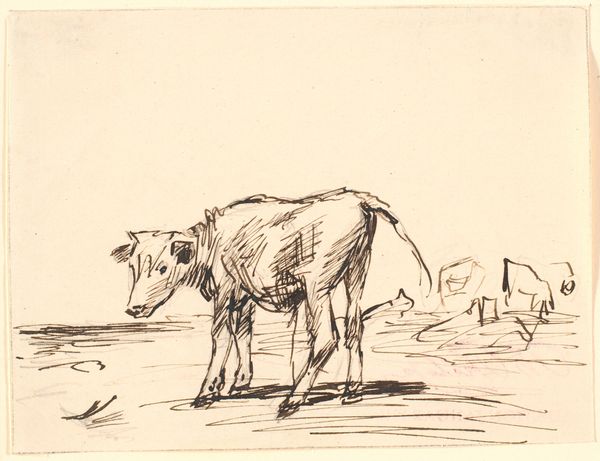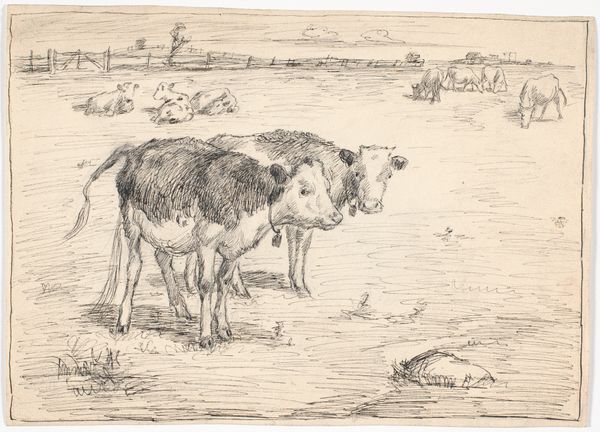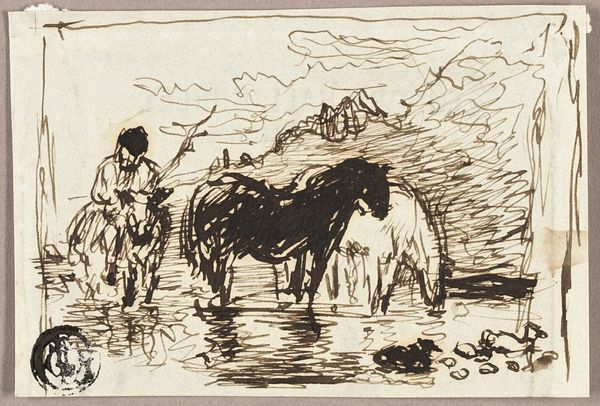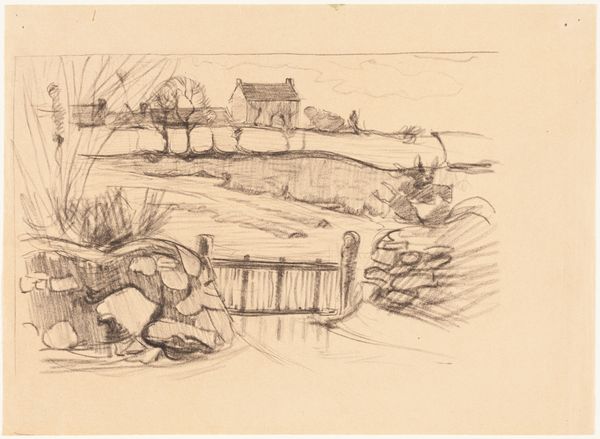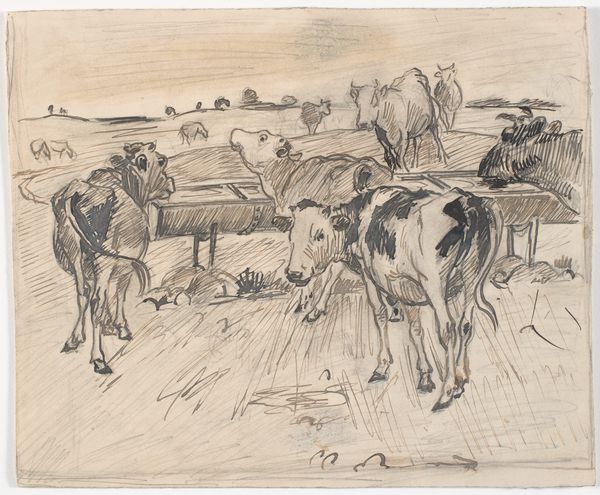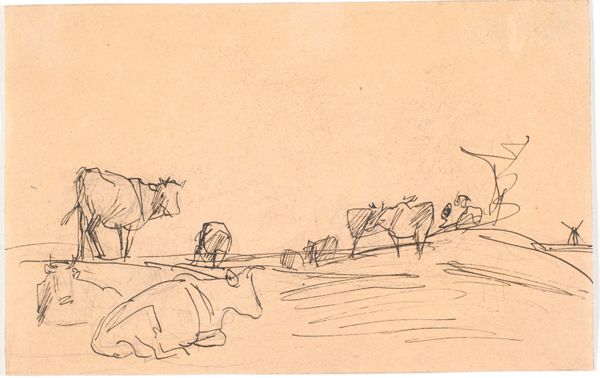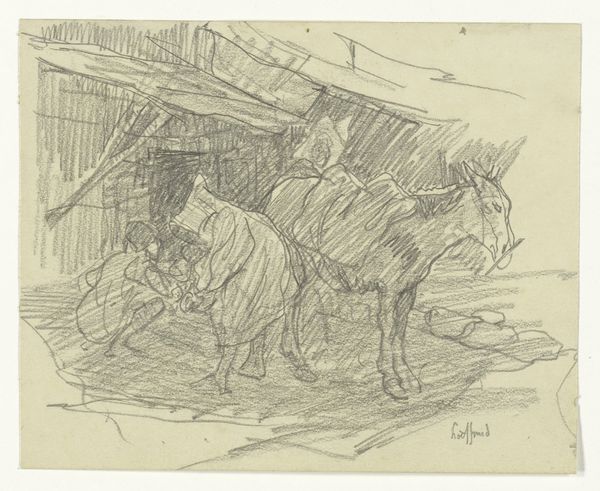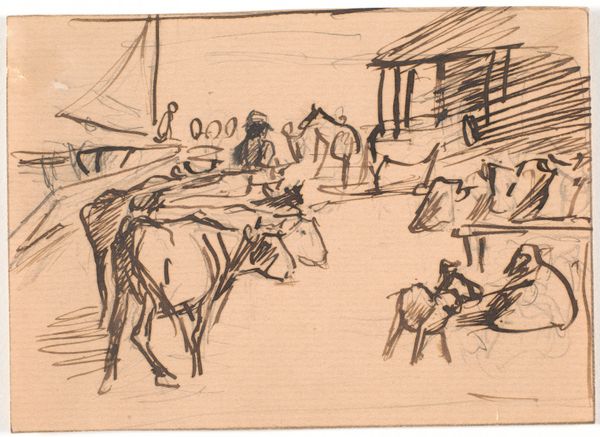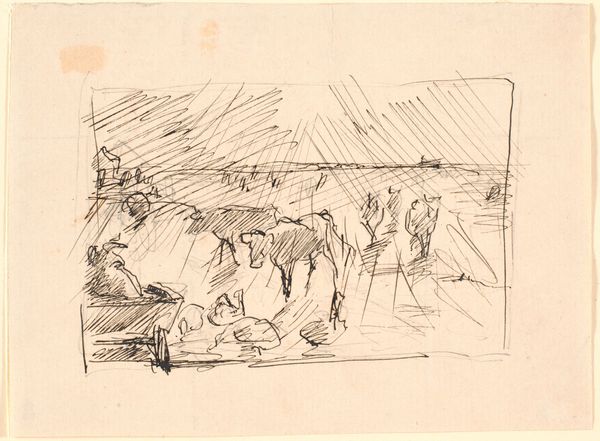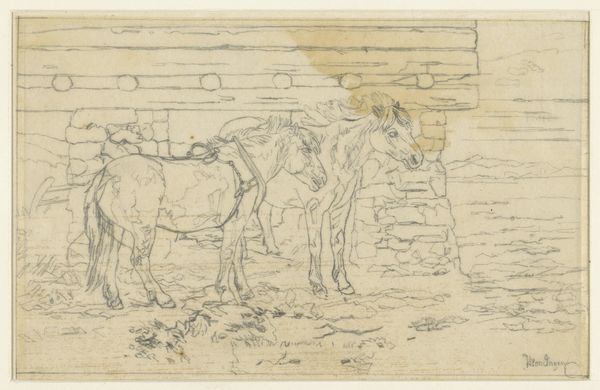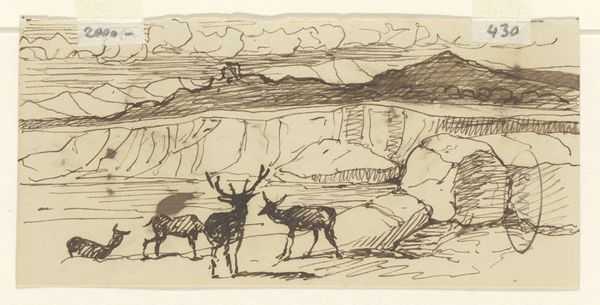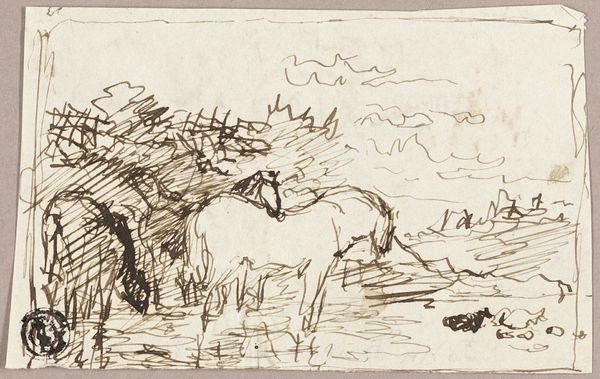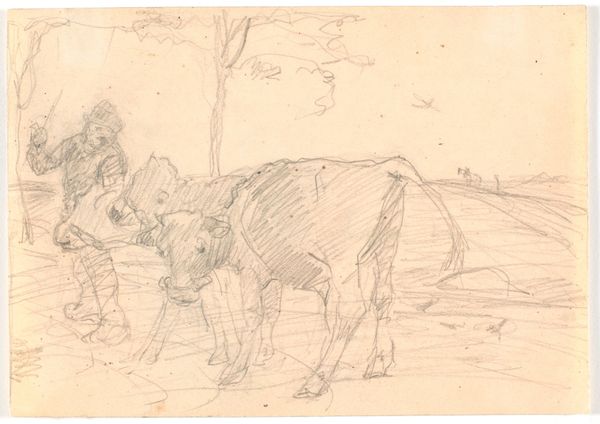
drawing, plein-air, watercolor, ink, pencil
#
drawing
#
dutch-golden-age
#
impressionism
#
plein-air
#
landscape
#
watercolor
#
ink
#
pencil
#
watercolour illustration
#
watercolor
Dimensions: height 80 mm, width 200 mm
Copyright: Rijks Museum: Open Domain
Editor: Here we have Johannes Tavenraat's "Three Cows and Ducks by a Farm," made between 1870 and 1880 using pencil, ink, and watercolor. It strikes me as a quick, almost fleeting sketch capturing a rural scene. What draws your attention when you look at this piece? Curator: Immediately, the materials speak volumes. Pencil, ink, watercolor – these aren’t the materials of grand historical painting. Tavenraat’s choice signals a shift toward valuing the everyday, a focus on capturing the transient effects of light and atmosphere *en plein air*. Notice how the sketchiness almost obscures the labor involved. Editor: It does feel immediate. So, you're saying the medium itself is a statement? Curator: Absolutely. It challenges the established hierarchy where oil paint was considered superior. Tavenraat is engaging with the rising Impressionist movement but bringing a Dutch sensibility of landscape, isn't he? Consider also who *owned* watercolors and sketches. Were these intended for public consumption, or for a different, more private market? Editor: I hadn't considered the market. How would that have impacted the subject matter? Curator: It suggests a growing middle class with an interest in art that reflects their own lives and experiences, rather than solely grand historical narratives. Look at the labor absent from this landscape; cows and ducks offer only food production as use-value. Where are the people who depend on this use-value to produce surplus? This is a consumption driven fantasy! How might this pastoral scene hide, rather than reveal, labor and economic realities? Editor: That gives me a lot to think about regarding who the art was really for, and whose story it actually tells, or doesn’t tell. Curator: Indeed! By examining the materials and potential audience, we uncover layers of social and economic meaning embedded in this seemingly simple drawing. The consumption that powers its artistic genesis, however subtle, becomes glaringly obvious through material analysis.
Comments
No comments
Be the first to comment and join the conversation on the ultimate creative platform.
